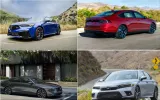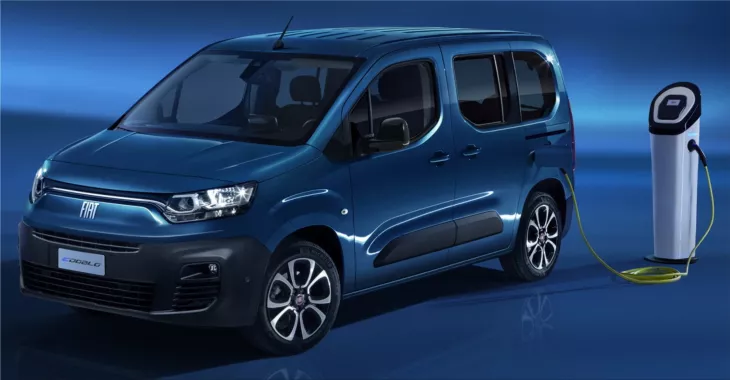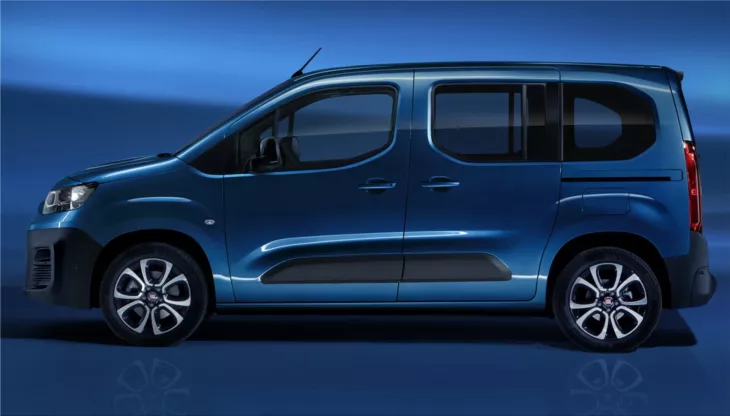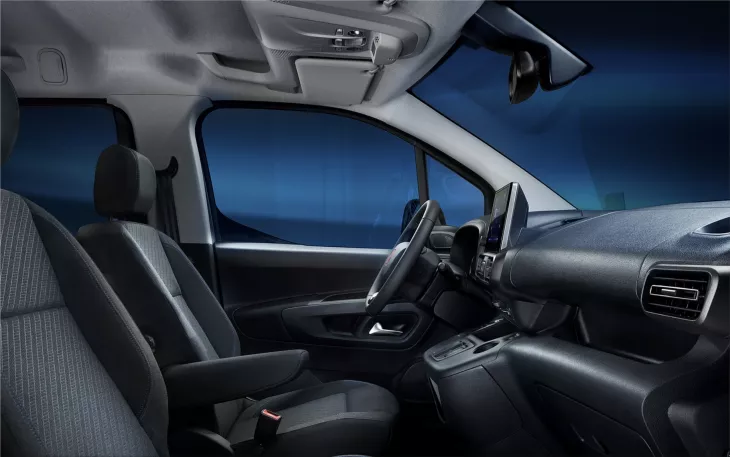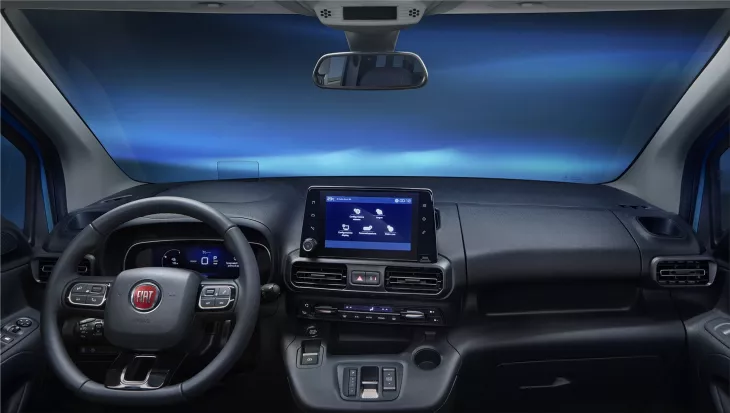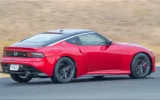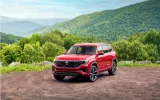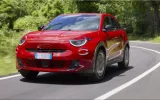The fifth version of the K9 commercial vehicle, developed by PSA and previously offered in passenger car form by Peugeot Rifter, Citroen Berlingo Multispace), Opel Combo Life, and Toyota Proace City Verso is signed by Fiat and will be available exclusively in the technical configuration with an electric motor with 136 hp and the short wheelbase format, with 5 and 7 seats, for a length of 4.4 meters. The Fiat E-Doblo returns in this fifth generation with an electric motor only, at least in the passenger transport variant, and aims to establish itself on the market primarily through the capillarity of the Fiat sales and assistance networks, as well as the vehicle's proven reliability, which has been on the market alongside French brands since 2017. The manufacturer declares a range of 282 km in the WLTP mixed cycle, which increases to 420 km in urban settings.
The presence of the 57 kWh battery in a central position under the floor to save space and lower the center of gravity, as well as the recharging socket for ultrafast columns, allows 80% of the available autonomy to be reached in half an hour, making the Fiat E-Doblo appealing to those whose hobbies involve carrying bulky objects over short distances, such as cycling. However, it can successfully serve as a second car in the city, perhaps for families with two or three little children: they can be picked up from kindergarten or school, even within the ZTL, and driven home, thanks to the existence of Isofix attachments on all three rear seats. The Fiat E-Doblo relies on a very respectable luggage compartment, little more than symbolic (65 liters) with all seven seats in use, but remarkable when the individual seats are folded down, so that loading up to the pavilion with the rear seats upright, a helpful volume of 1,355 liters can be counted on.
We put the Fiat E-Doblo to the test in heavy city traffic, where it knows how to dart between one traffic light and another with a decisive cue at the start, almost irresistible by selecting Sport mode with the appropriate slider (l acceleration is less intense in the Normal and Eco positions, the latter being preferable when trying to gain a few extra kilometers of autonomy), and can be appreciated for the comfort qualities that stem from t (there is no the gearbox; at most you can set position B to accentuate regenerative braking, so you drive it like an automatic).
Driving in city alleys is also made easier by the compact proportions and superb steering angle (fitted with a very light control). The square shapes of the vehicle and the rearview camera help in parking techniques. A quick drive around the ring road reveals the Fiat E-Doblo's stability, partly due to the weight of the batteries being adequately centered in the wheelbase region.
The Fiat E-Doblo is only available in the Launch Edition (40,000 euros), which comes standard with roof bars, Magic Window (the rear window can be opened separately from the tailgate), alloy wheels, black 16" mirrors, power fold door mirrors, power tinted rear windows, leather-wrapped steering wheel, digital instrument cluster with a 10-inch screen, and Magic Top (a panoramic glass roof with power-sliding blackout blind that offers more storage space thanks to a transparent shelf and a rear locker, accessible both from inside and outside the vehicle, with the tailgate open of course).
The safety features and, more importantly, the driving aids of the Fiat E-Doblo are intriguing, including sign recognition, involuntary lane departure warning, driver tiredness monitoring, and automatic emergency braking. The rest of the lineup is expected to follow, led by the "basic" set-up with Launch Pack, priced at 38,400 euros sans Magic Top and with analog instruments.
The passenger compartment may be transformed in various ways, including a seven-seat configuration (optional) and a trunk with nearly three cubic meters of practical space. It still has to be more for a vacation vehicle: with 280 km or so, you can move around, particularly in the city or for short journeys out of town. Dynamic behavior that is lively and safe, thanks partly to the weight of the batteries being appropriately positioned between the axles to favor stability and mass distribution on the two axles.

